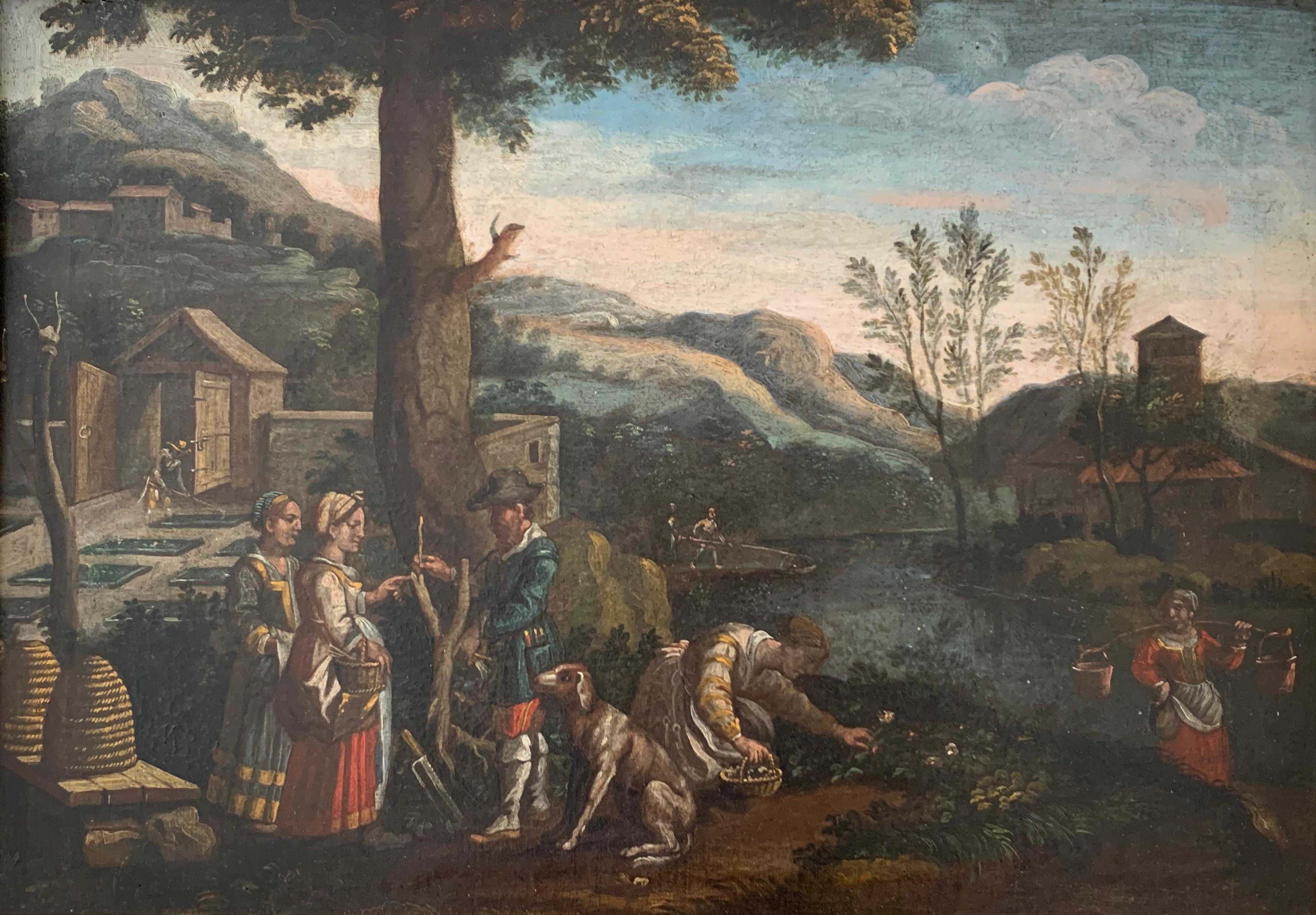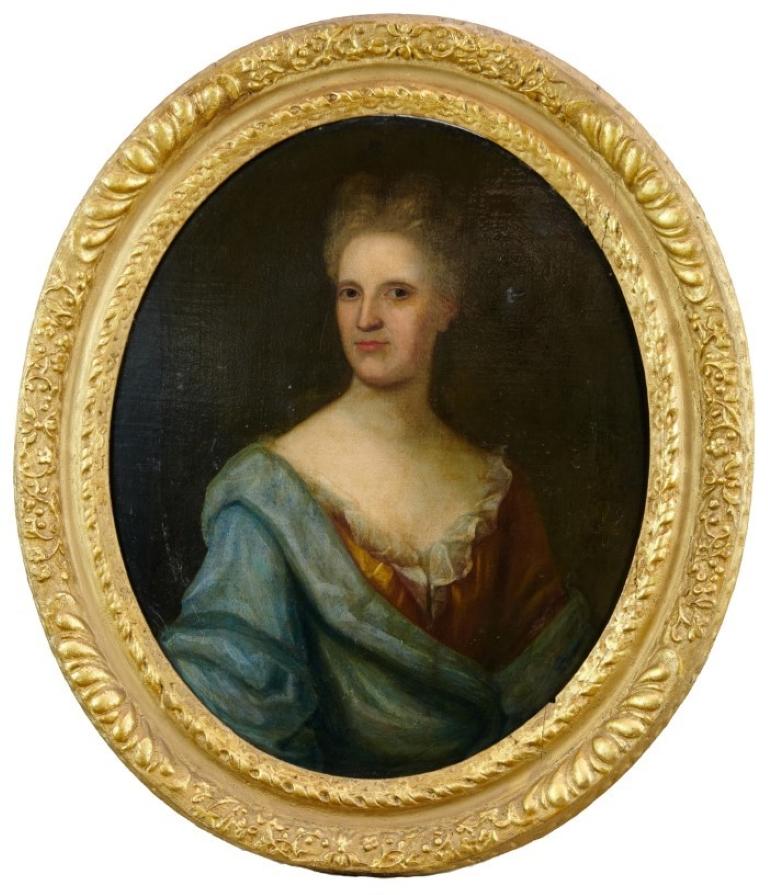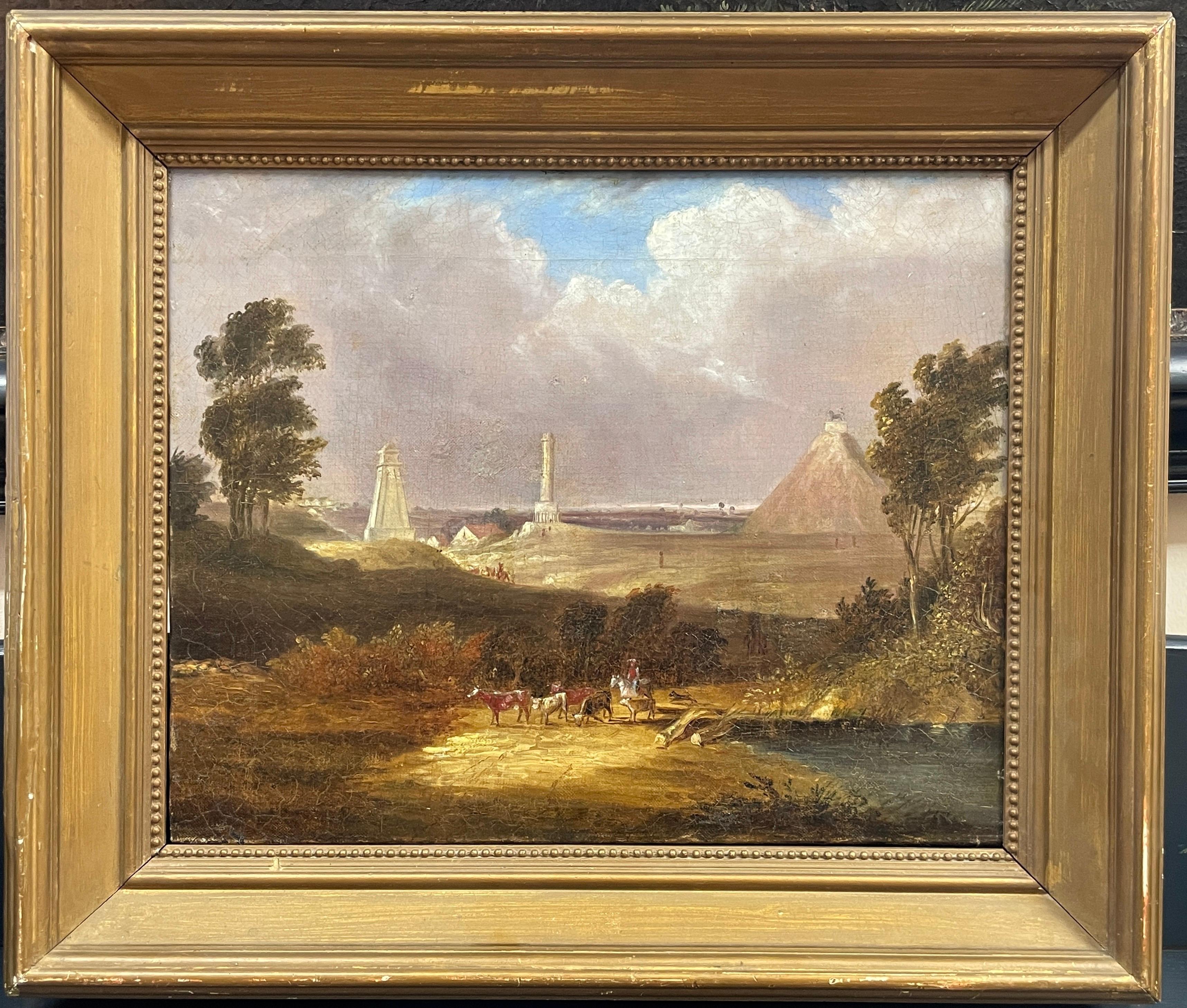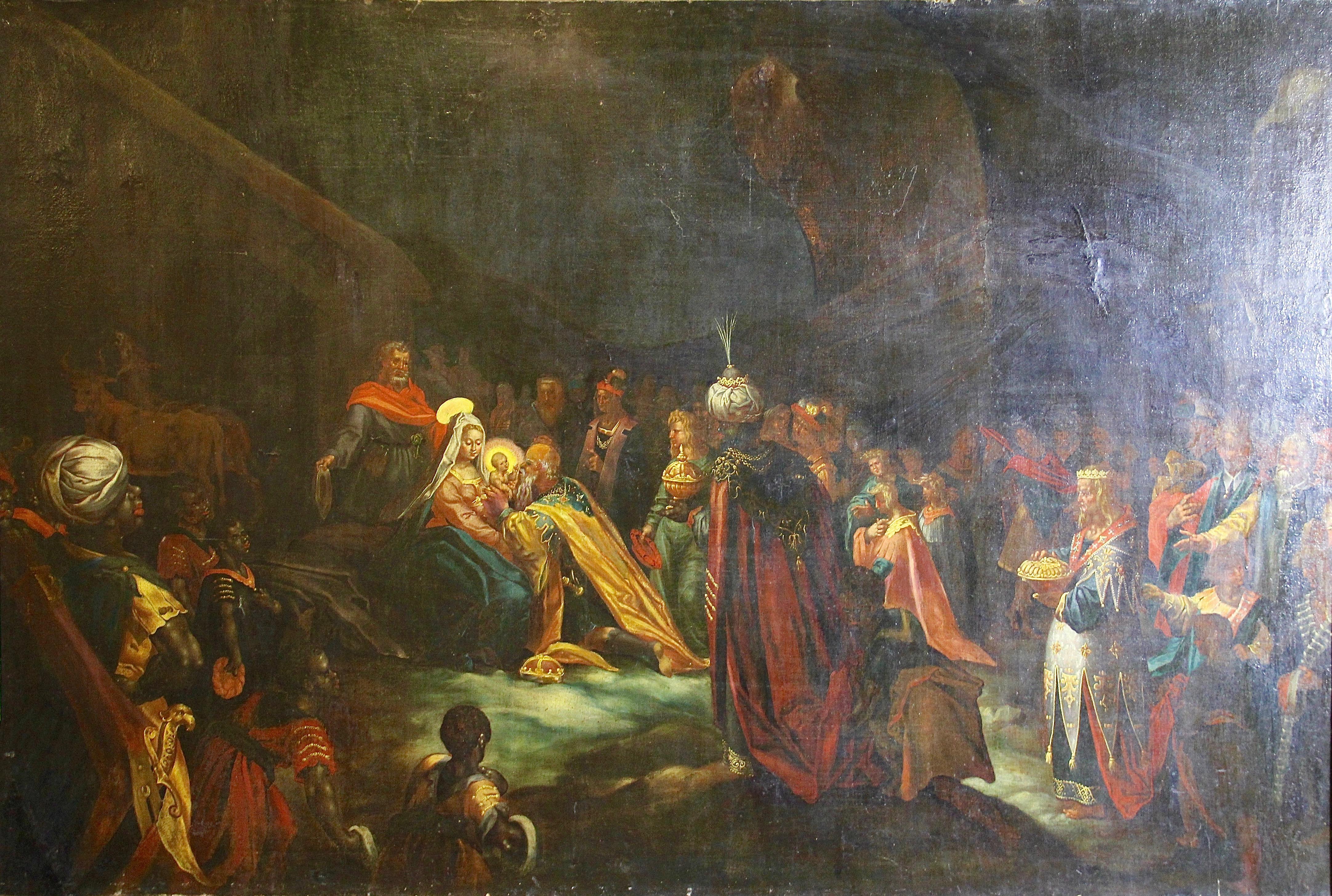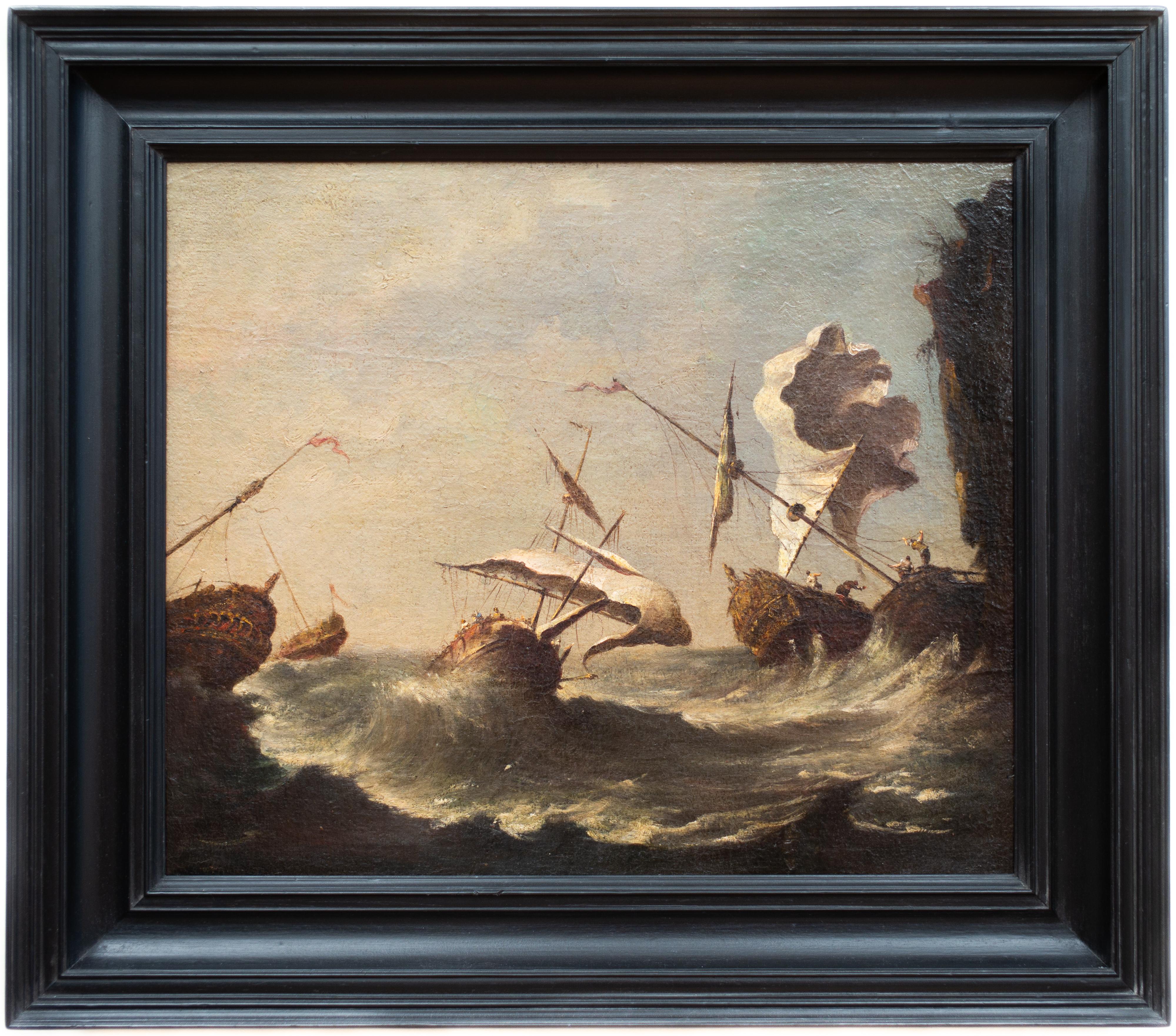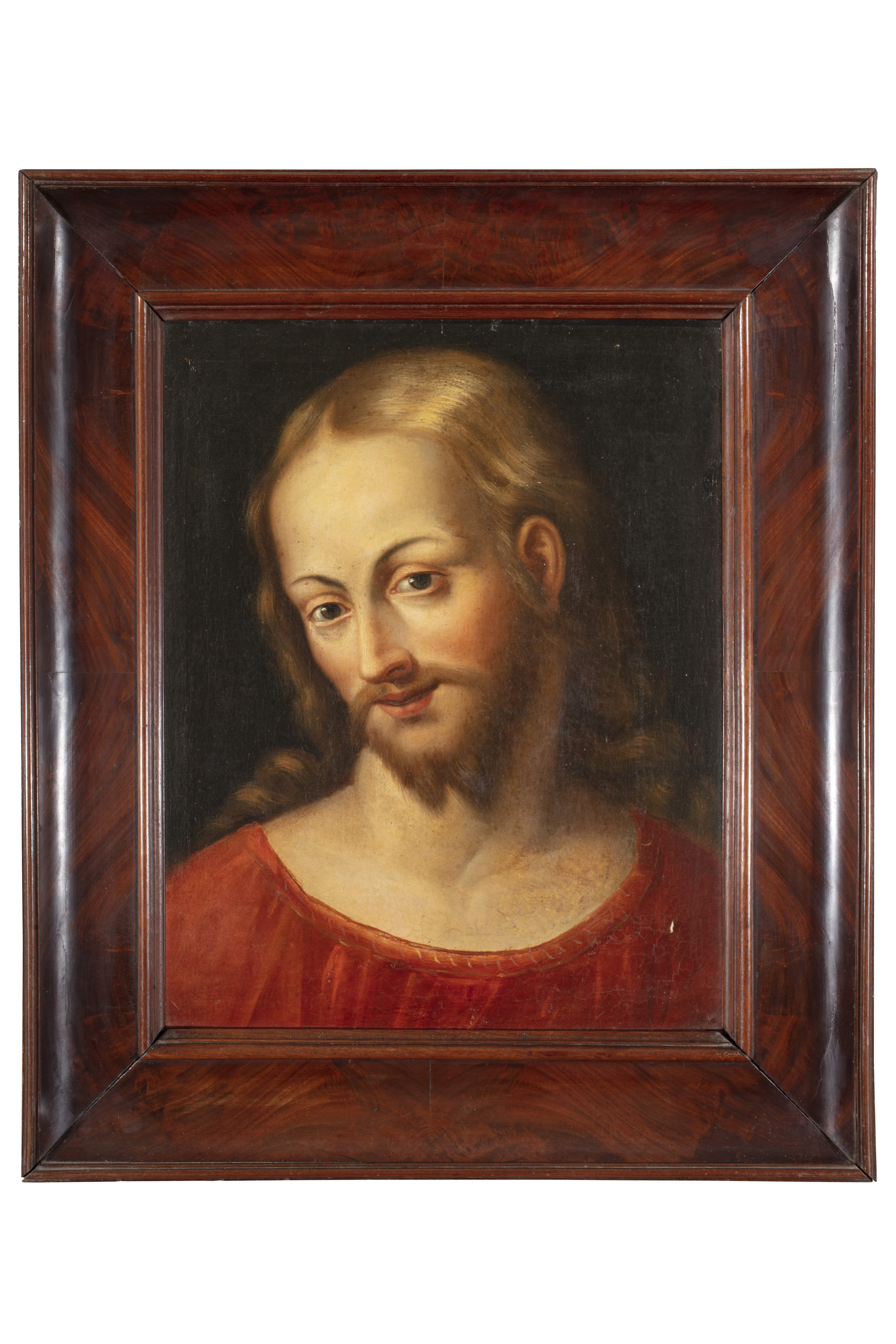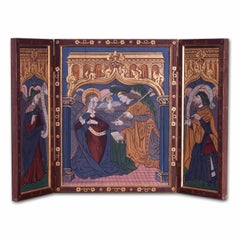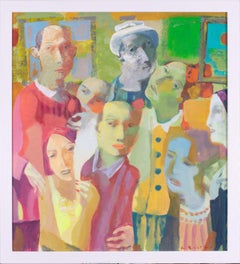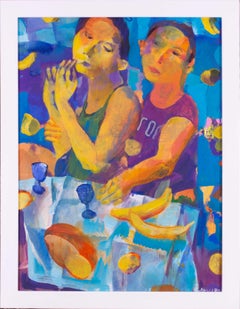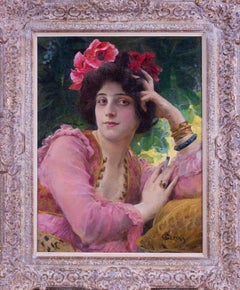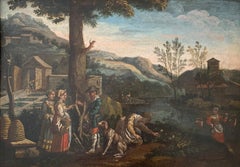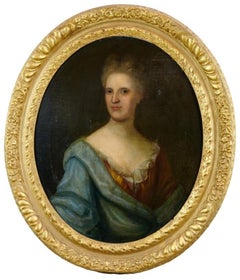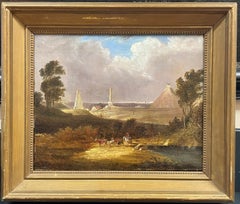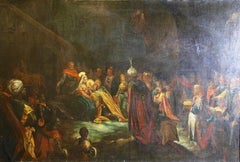Items Similar to French Old Master oil painting of 3 figures releasing a dove
Want more images or videos?
Request additional images or videos from the seller
1 of 12
French Old Master oil painting of 3 figures releasing a dove
About the Item
Circle of Jean-Antoine Watteau (French, 1684-1721)
Freeing a dove
Oil on canvas
27.3/4 x 38.1/8 in. (70 x 96.8 cm.)
Possible repair to upper right. In overall good order for the age otherwise.
- Dimensions:Height: 27.75 in (70.49 cm)Width: 38.13 in (96.86 cm)Depth: 1 in (2.54 cm)
- Medium:
- Movement & Style:
- Circle Of:Jean-Antoine Watteau (1684 - 1721, French)
- Period:
- Condition:oil on canvas, relined. In a gilded composite frame with foliate and floral decoration. Paint surface is stable, surface dirt and varnish discolouration. Various retouchings at a time, paint surface slightly thinner in certain places.
- Gallery Location:Petworth, GB
- Reference Number:1stDibs: LU54039879862
About the Seller
4.9
Gold Seller
Premium sellers maintaining a 4.3+ rating and 24-hour response times
Established in 2010
1stDibs seller since 2017
261 sales on 1stDibs
Typical response time: 2 hours
- ShippingRetrieving quote...Shipping from: Petworth, United Kingdom
- Return Policy
Authenticity Guarantee
In the unlikely event there’s an issue with an item’s authenticity, contact us within 1 year for a full refund. DetailsMoney-Back Guarantee
If your item is not as described, is damaged in transit, or does not arrive, contact us within 7 days for a full refund. Details24-Hour Cancellation
You have a 24-hour grace period in which to reconsider your purchase, with no questions asked.Vetted Professional Sellers
Our world-class sellers must adhere to strict standards for service and quality, maintaining the integrity of our listings.Price-Match Guarantee
If you find that a seller listed the same item for a lower price elsewhere, we’ll match it.Trusted Global Delivery
Our best-in-class carrier network provides specialized shipping options worldwide, including custom delivery.More From This Seller
View AllTurn of the 20th Century French tryptic depicting the Annunciation with 2 saints
Located in Petworth, West Sussex
A. Lion (French, c. 1900)
A tryptic depicting the Annunciation flanked by two Saints
Signed “A. LION” (to the left of Mary)
Oil on board
Framed dimensions 23. ½ x 37. ½ in. (60 x 95...
Category
19th Century Old Masters Figurative Paintings
Materials
Oil, Board
Contemporary Ukrainian oil painting 'Family' by Andrei Bludov, greens and pinks
Located in Petworth, West Sussex
Andrei Bludov (Ukranian b. 1962)
Family
Oil on canvas
Signed A Bludov (lower right), further signed, inscribed with title and dated ‘October 2019’ (on th...
Category
21st Century and Contemporary Contemporary Figurative Paintings
Materials
Canvas, Oil
Contemporary Ukrainian oil painting 'Twins' by Andrei Bludov, blues and oranges
Located in Petworth, West Sussex
Andrei Bludov (Ukranian b. 1962)
Twins
Oil on canvas
Signed ‘A Bludov’ (lower right), further signed, inscribed with title and dated ‘October 2021’ (on t...
Category
21st Century and Contemporary Contemporary Figurative Paintings
Materials
Canvas, Oil
Original painting for JOB cigarettes advert, 1900, by French artist Gervais
Located in Petworth, West Sussex
Paul Gervais was one of the most highly regarded painters of the female form in the late 19th Century but this is one of his most famous images as it was used in the advertising camp...
Category
19th Century Academic Portrait Paintings
Materials
Canvas, Oil
British, early 20th Century oil painting of a shepherd returning home at sunset
Located in Petworth, West Sussex
Owen Baxter Morgan (British, fl. 1905 – 1932)
Returning home at sunset
Oil on canvas
Signed in capitals ‘BAXTER MORGAN’ (lower right)
14 x 21 in. (35.7 x 53.3 cm.)
Category
20th Century Impressionist Figurative Paintings
Materials
Canvas, Oil
Pair of early 20th Century British Impressionist paintings of the beach
Located in Petworth, West Sussex
Attributed to Rowland Wheelwright, 20th Century
'Bather's on the shore' and 'Sunbathing by the Cliffs'
Oil on canvas board
9 X 10. 1/4in. (22.8 X 2...
Category
20th Century Impressionist Figurative Paintings
Materials
Canvas, Oil, Board
You May Also Like
FINE 17th CENTURY ITALIAN OLD MASTER OIL PAINTING - FIGURES GARDENING LANDSCAPE
Located in Cirencester, Gloucestershire
"The Working Landscape"
Italian School, 17th century
oil painting on canvas, framed
canvas: 42.5cm x 60cm
framed: 50.5cm x 68cm
Fine quality Italian Old Master oil painting on can...
Category
Mid-17th Century Old Masters Landscape Paintings
Materials
Canvas, Oil
$8,177 Sale Price
20% Off
Fine 18th Century English Aristocratic Portrait of a Lady Oval Canvas Gilt Frame
Located in Cirencester, Gloucestershire
Artist/ School: English School, circa 1740's
Title: Portrait of a Lady, traditionally identified as 'Anne of Chesterfield'.
Medium: oil painting on canvas, framed
Size: painting: ...
Category
Early 18th Century Old Masters Portrait Paintings
Materials
Canvas, Oil
Waterloo Battlefield with 3 Monuments - Butte du Lion, Antique Oil Painting
Located in Cirencester, Gloucestershire
The Battlefield of Waterloo
English School, 19th century
original oil painting on canvas, framed
canvas: 12 x 15.5 inches
framed: 17.5 x 20.5 inches
condition: overall very good and presentable, some former restoration and signs of retouching visible.
provenance: from a private collection
A very rare and historically important early painting, depicting the Waterloo battle...
Category
Early 19th Century Old Masters Landscape Paintings
Materials
Canvas, Oil
Antique painting. "Kings from all over the world in Bethlehem". Christian scene.
Located in Berlin, DE
Huge and very decorative castle painting.
Antique oil painting. Probably 18th century.
"Kings from all over the world in Bethlehem".
Christian scene.
Canvas relined.
Big, heavy fr...
Category
18th Century Old Masters Figurative Paintings
Materials
Canvas, Oil
Shipping in Stormy Waters, Attributed to Italian Artist Francesco Guardi
By Francesco Guardi
Located in Stockholm, SE
The splendour of the tragic sea
Francesco Guardi and maritime painting in Venetian art
No Venetian painter was a stranger to the sea. After all, Venice was not only one of the most prominent ports of the Mediterranean, but indeed a city literally submerged in the ocean from time to time. Curiously however, the famous Venetian school of painting showed little interest in maritime motifs, favouring scenes from the iconic architecture of the city rather than seascapes. That is why this painting is a particularly interesting window into not only the painter Francesco Guardi himself – but to the significance of the element of water in art history, in absence as well as in the centre of attention.
Whether it be calm, sunny days with stunning views of the palaces alongside the canals of Venice or – more rarely – stormy shipwrecking tragedies at sea, water as a unifying element is integral to the works of painter Francesco Guardi (1712–1793). During his lifetime, Venetian art saw many of its greatest triumphs with names like Tiepolo or Canaletto gaining international recognition and firmly establishing Venice as one of the most vibrant artistic communities of Europe. While the city itself already in the 18th century was something of an early tourist spot where aristocrats and high society visited on their grand tour or travels, the artists too contributed to the fame and their work spread the image of Venice as the city of romance and leisure to an international audience, many of whom could never visit in person.
Still today, the iconic image of Venice with its whimsical array of palaces, churches and other historic buildings is much influenced by these artists, many of whom have stood the test of time like very well and remain some of the most beloved in all of art history. It was not primarily subtility, intellectual meanings or moral ideals that the Venetian art tried to capture; instead it was the sheer vibrancy of life and the fast-paced city with crumbling palaces and festive people that made this atmosphere so special. Of course, Venice could count painters in most genres among its residents, from portraiture to religious motifs, history painting and much else. Still, it is the Vedutas and views of the city that seems to have etched itself into our memory more than anything else, not least in the tradition of Canaletto who was perhaps the undisputed master of all Venetian painters.
Born into his profession, Francesco lived and breathed painting all his life. His father, the painter Domenico Guardi (1678–1716) died when Francesco was just a small child, yet both he and his brothers Niccolò and Gian Antonio continued in their fathers’ footsteps. The Guardi family belonged to the nobility and originated from the mountainous area of Trentino, not far from the Alps. The brothers worked together on more challenging commissions and supported each other in the manner typical of family workshops or networks of artists. Their sister Maria Cecilia married no other than the artist Giovanni Battista Tiepolo himself, linking the family to the most renowned Venetian name of the time. During almost a decade, Guardi worked in the studio of Michele Giovanni Marieschi, sometimes simply known as Michiel, a painted similar in both style and motif. Canaletto is, however, the artist Guardi is most often compared to since they shared a mutual fascination for depicting the architecture and cityscape of Venice.
During the course of his career, Guardi tried his hand in many different genres. He was as swift in painting landscapes, Vedutas of Venice, sacred motifs, interiors and architectural compositions as he was in a number of other motifs. His style is typical of the Venetian school but also distinct and personal once we look a little closer. There is an absolute certainty in the composition, the choice of which sometimes feels like that of a carefully calculated photograph – yet it is also very painterly, in the best sense of the word: fluid, bold, sensitive and full of character. The brushwork is rapid, intense, seemingly careless and extraordinarily minute at the same time; fresh and planned in a very enjoyable mixture. His interiors often capture the breath-taking spacious glamour of the palaces and all their exquisite decor. He usually constructed the motif through remarkably simple, almost spontaneous yet intuitively precise strokes and shapes. The result was a festive, high-spirited atmospheric quality, far away from the sterile and exact likeness that other painters fell victim to when trying to copy Canaletto.
The painting here has nothing of the city of Venice in it. On the contrary, we seem to be transported far away into the solitary ocean, with no architecture, nothing to hold on to – only the roaring sea and the dangerous cliffs upon which the ships are just moments away from being crushed upon. It is a maritime composition evoking both Flemish and Italian precursors, in the proud tradition of maritime painting that for centuries formed a crucial part of our visual culture.
This genre of painting is today curiously overlooked, compared to how esteemed and meaningful it was when our relationship to the sea was far more natural than it is today. When both people and goods travelled by water, and many nations and cities – Venice among them – depended entirely on sea fare, the existential connection to the ocean was much more natural and integrated into the imagination. The schools and traditions of maritime art are as manifold as there are countries connected to the sea, and all reflect the need to process the dangers and wonders of the ocean.
It could symbolize opportunity, the exciting prospects of a new countries and adventures, prospering trade, beautiful scenery as well as war and tragedy, loss of life, danger and doom. To say that water is ambivalent in nature is an understatement, and these many layers were something that artists explored in the most wondrous ways. Perhaps it takes a bit more time for the modern eye to identify the different nuances and qualities of historic maritime paintings, they may on first impression seem hard to differentiate from each other. But when allowing these motifs to unfold and tell stories of the sea in both fiction and reality – or somewhere in between – we are awarded with an understanding of how the oceans truly built our world.
In Guardi’s interpretation, we see an almost theatrically arranged shipwrecking scene. No less than five ships are depicted right in the moment of utter disaster. Caught in a violent storm, the waves have driven them to a shore of sharp cliffs and if not swallowed by the waves, crushing against the cliffs seems to be the only outcome. The large wooden ships are impressively decorated with elaborate sculpture, and in fact relics already during Guardi’s lifetime. They are in fact typical of Dutch and Flemish 17th century ships, giving us a clue to where he got the inspiration from. Guardi must have seen examples of Flemish maritime art, that made him curious about these particular motifs. One is reminded of Flemish painters like Willem van de Velde and Ludolf Backhuysen, and this very painting has indeed been mistakenly attributed to Matthieu van Plattenberg...
Category
18th Century Old Masters Landscape Paintings
Materials
Canvas, Oil
$46,272 Sale Price
32% Off
Free Shipping
16th Century by Bernardino Detti Face of Christ Oil on Canvas
Located in Milano, Lombardia
Bernardino Detti (Pistoia, Italy, 1498 - 1572)
Title: Face of Christ
Medium: Oil on canvas
Dimensions: without frame 41 x 32 cm - with frame 47 x 55.5 cm
Antique box frame made of solid wood and walnut burl.
Publications: unpublished
The painting by Bernardino Detti (1498 - 1572) depicts the face of Jesus...
Category
16th Century Old Masters Figurative Paintings
Materials
Canvas, Oil
Recently Viewed
View AllMore Ways To Browse
Antique Dove
Dover Antique
French Dove
Mr Brainwash Brainwash
Picasso Lithograph 1967
Sex Andy
Slim Aarons Mountains
Vintage Photography Japan
Vintage Sports Posters
Vintage Theater Poster
Vintage World Flags
1974 Watches
19th Century Children Portraits
Childs Rocking
Engraving Dante
Femme Fatale
Floating Book
Ivory Saints
